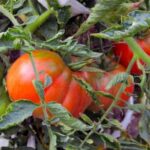Are you looking for some inspiration and guidance for your backyard gardening vegetable ideas? Look no further. Backyard gardening is a fantastic way to save money, eat healthier, and connect with nature. With the right vegetables, planning, and care, you can create a thriving garden space right in your own backyard.
When it comes to choosing the right vegetables for your backyard garden, it’s important to consider your climate and soil type. Whether you’re a beginner or experienced gardener, we’ll provide you with tips on selecting easy-to-grow vegetables that will flourish in your specific environment.
In addition to vegetable selection, planning and designing your backyard garden layout is crucial for success. We’ll discuss the importance of proper spacing and functional design to create an aesthetically pleasing and productive garden space. So get ready to roll up your sleeves and get started on creating a bountiful backyard vegetable garden.
Choosing the Right Vegetables for Your Backyard Garden
When it comes to backyard gardening vegetable ideas, choosing the right vegetables for your garden is a crucial step in ensuring a successful harvest. It’s important to consider your climate and soil type when selecting which vegetables to grow. Here are some tips for choosing the right vegetables for your backyard garden:
- Consider Your Climate: Different vegetables thrive in different climates, so it’s important to choose varieties that are well-suited to your specific growing conditions. For example, if you live in a hot and dry climate, you may want to choose heat-tolerant vegetables like tomatoes, peppers, and melons. If you have a cooler climate, you may opt for cold-hardy vegetables like carrots, kale, and lettuce.
- Assess Your Soil Type: The type of soil in your backyard will also influence which vegetables will grow best. Some vegetables prefer well-drained sandy soil, while others thrive in moisture-retaining clay soil. Conduct a soil test or consult with a local gardening expert to determine the composition of your soil and which vegetables will perform well in it.
- Easy-to-Grow Vegetables for Beginners: If you’re new to backyard gardening, consider starting with easy-to-grow vegetables that require minimal maintenance. Some beginner-friendly options include radishes, green beans, zucchini, and lettuce. These vegetables are relatively low-maintenance and can be very rewarding for novice gardeners.
By taking these factors into consideration when choosing the right vegetables for your backyard garden, you’ll be setting yourself up for a bountiful harvest of delicious homegrown produce.
Planning and Designing Your Backyard Vegetable Garden
When it comes to planning and designing your backyard vegetable garden, there are several key factors to consider in order to create a functional and aesthetically pleasing outdoor space. One of the most important aspects of planning your garden is determining its layout and spacing. Proper layout and spacing will not only contribute to the overall visual appeal of your garden but also play a crucial role in the health and productivity of your vegetables.
Layout and Spacing
When planning the layout of your vegetable garden, it’s important to take into account the specific needs of each type of vegetable you plan to grow. Consider factors such as plant size, growth habits, and sunlight requirements when arranging your garden beds. Grouping plants with similar needs together can help optimize space and make maintenance easier.
Designing a Functional Garden Space
In addition to layout and spacing, it’s essential to design a garden space that is both functional and visually appealing. Incorporating pathways between garden beds can make it easier to access and maintain your plants.
You may also want to consider adding decorative elements such as trellises or arbors for climbing vegetables like peas, beans, or cucumbers. Furthermore, incorporating seating areas or outdoor dining spaces within or near your garden can enhance the enjoyment of your outdoor space while providing an up-close view of your gardening handiwork.
Maximizing Space
For those with limited outdoor space, consider vertical gardening options such as trellises, hanging planters, or tiered raised beds. This can maximize planting area while adding visual interest to your backyard. Additionally, utilizing containers for growing vegetables is another great way to make the most of a small space while allowing for flexibility in moving plants around as needed for optimal growing conditions.
By carefully considering the layout, design, and use of space in your backyard vegetable garden planning process, you can create an attractive and productive outdoor oasis that provides food for both body and soul.
Preparing and Maintaining the Soil for Vegetable Gardening
One way to improve soil quality is through composting, which involves recycling organic materials like kitchen scraps, yard waste, and manure into nutrient-rich fertilizer. Compost adds valuable organic matter to the soil, improves its structure, and provides essential nutrients for plant growth. Additionally, mulching your garden beds with organic materials such as straw, leaves, or wood chips helps retain moisture, suppress weeds, and regulate soil temperature.
In terms of ongoing soil maintenance, it’s essential to continue adding compost regularly to replenish nutrients and maintain soil health. Crop rotation is another effective method for preventing nutrient depletion and minimizing pest and disease problems in your vegetable garden. By rotating crops each season, you can break pest cycles and balance the use of nutrients in the soil.
| Soil Preparation | Benefits |
|---|---|
| Soil testing | Determines pH levels and nutrient content |
| Composting | Adds organic matter and nutrients to the soil |
| Mulching | Retains moisture, suppresses weeds, regulates temperature |
Planting and Caring for Your Vegetable Garden
When it comes to planting and caring for your backyard gardening vegetable ideas, it’s important to follow best practices to ensure a successful harvest. Whether you’re new to gardening or have been cultivating vegetables for years, there are several key steps to keep in mind. Here are some tips for planting and caring for your vegetable garden:
1. Plant with Proper Spacing: When planting your vegetable seeds or transplants, be sure to follow the recommended spacing guidelines for each type of plant. This will help prevent overcrowding and promote healthy growth.
2. Watering: Adequate watering is crucial for the success of your vegetable garden. Be sure to water consistently, especially during hot and dry periods. Consider using a drip irrigation system or soaker hoses to deliver water directly to the roots of your plants.
3. Fertilizing and Pest Control: Regular fertilization is important for providing essential nutrients to your vegetables. Consider using natural or organic fertilizers to promote healthy soil and plants. Additionally, keep an eye out for pests and diseases that may affect your vegetable garden, and promptly address any issues that arise.
Overall, by following these tips and best practices, you can ensure that your backyard gardening vegetable ideas thrive and provide you with a bountiful harvest throughout the growing season.
Creative Container and Vertical Gardening Ideas
Planting a vegetable garden in your backyard doesn’t have to be limited to traditional ground-level plots. Creative container and vertical gardening ideas offer innovative ways to grow vegetables, even in small or unconventional spaces. Whether you lack a large yard or simply want to add visual interest to your garden, these ideas can help you maximize your growing space.
Container gardening is an excellent option for those with limited outdoor space or for gardeners who want the flexibility to move their plants around. When choosing containers for your vegetables, consider factors such as size, drainage, and material. It’s essential to select pots that are large enough for the specific vegetable plants’ root systems and ensure they have adequate holes at the bottom for water drainage.
Vertical gardening allows you to utilize vertical space by growing vegetables upward instead of outward. This method is ideal for small yards, balconies, or patios where horizontal space may be limited. Some popular options for vertical gardening include trellises, arbors, hanging baskets, and living walls. When planning a vertical garden, select vegetables that naturally vine or climb, such as tomatoes, cucumbers, peas, and beans.
In addition to traditional pots and trellises, there are also numerous DIY container and vertical gardening ideas that allow you to upcycle household items into functional planters. From repurposing wooden crates and pallets to creating tiered plant stands from old furniture pieces, the possibilities for unique container gardens are endless.
| Container Gardening | Vertical Gardening |
|---|---|
| A great option for small yards | Ideal for utilizing vertical space |
| Containers should have proper drainage | Best suited for vining or climbing vegetables |
| Allows flexibility in moving plants | Options include trellises and living walls |
Harvesting and Preserving Your Homegrown Vegetables
Best Practices for Harvesting Vegetables
When it comes to harvesting your homegrown vegetables, timing is key. It’s important to pick the vegetables at the peak of ripeness to ensure optimal flavor and nutritional value. Different vegetables have different indicators of ripeness, so be sure to research each type in your garden.
Generally, vegetables should be firm, vibrant in color, and easily separated from the plant when they are ready to be harvested. For example, tomatoes should be picked when they are fully colored and slightly soft to the touch.
Tips for Storing and Freezing
Once your vegetables are harvested, proper storage is essential to maintain their freshness. Some vegetables, like carrots and beets, can be stored in a cool, dark place for an extended period of time. Others can be blanched and frozen for longer shelf life. Additionally, consider pickling or canning surplus vegetables such as cucumbers or peppers to enjoy them beyond their growing season.
Preservation Techniques
For those with a bountiful harvest, preservation techniques such as drying or making sauces and salsas can extend the enjoyment of homegrown produce throughout the year. Drying herbs like basil or oregano ensures that you’ll have robust flavors at your fingertips even during winter months. And creating tomato-based sauces or pepper-infused salsas allows you to capture the essence of summer in a jar.
With these tips on harvesting and preserving homegrown vegetables, you can make the most of your backyard gardening efforts by enjoying your produce long after the growing season has ended.
Delicious and Healthy Recipes Using Your Backyard Garden Vegetables
In conclusion, backyard gardening is truly a rewarding and beneficial endeavor. Not only does it allow you to save money and eat healthier, but it also creates a deep connection with nature. By choosing the right vegetables for your climate and soil type, planning and designing your garden effectively, preparing and maintaining the soil properly, and implementing best practices for planting and caring for your vegetable garden, you can enjoy an abundant harvest of homegrown produce.
One of the most exciting aspects of backyard gardening is harvesting the fruits of your labor. The satisfaction of picking fresh vegetables from your own garden is unmatched. And with proper preservation techniques, you can enjoy your homegrown vegetables year-round. Whether it’s freezing, canning, or pickling, there are various methods to ensure that none of your hard-earned produce goes to waste.
Once you have an abundance of fresh vegetables at your disposal, the next step is to use them in delicious and healthy recipes. From vibrant salads to hearty soups, there is no shortage of culinary creations that can be made using homegrown vegetables. Get creative in the kitchen and explore different flavor combinations to fully appreciate the bountiful harvest from your backyard gardening vegetable ideas.
Frequently Asked Questions
What Vegetables Are Easy to Grow in Backyard?
Many vegetables are easy to grow in a backyard, including tomatoes, lettuce, zucchini, and green beans. These vegetables require minimal maintenance and can thrive in various climates, making them ideal choices for beginner gardeners.
What Is a Good Layout for a Vegetable Garden?
A good layout for a vegetable garden typically involves organizing the plants in rows or raised beds to optimize space and sunlight exposure. It’s important to consider plant height and spacing to prevent overcrowding and allow for proper airflow.
What Vegetables Should Every Garden Have?
Every garden should have a variety of essential vegetables such as tomatoes, peppers, carrots, cucumbers, and leafy greens like spinach or kale. These vegetables are not only versatile in the kitchen but also relatively easy to grow, making them suitable for any garden.

If you’re looking to get into vegetable gardening, or are just looking for some tips on how to make your current garden better, then you’ve come to the right place! My name is Ethel and I have been gardening for years. In this blog, I’m going to share with you some of my best tips on how to create a successful vegetable garden.





